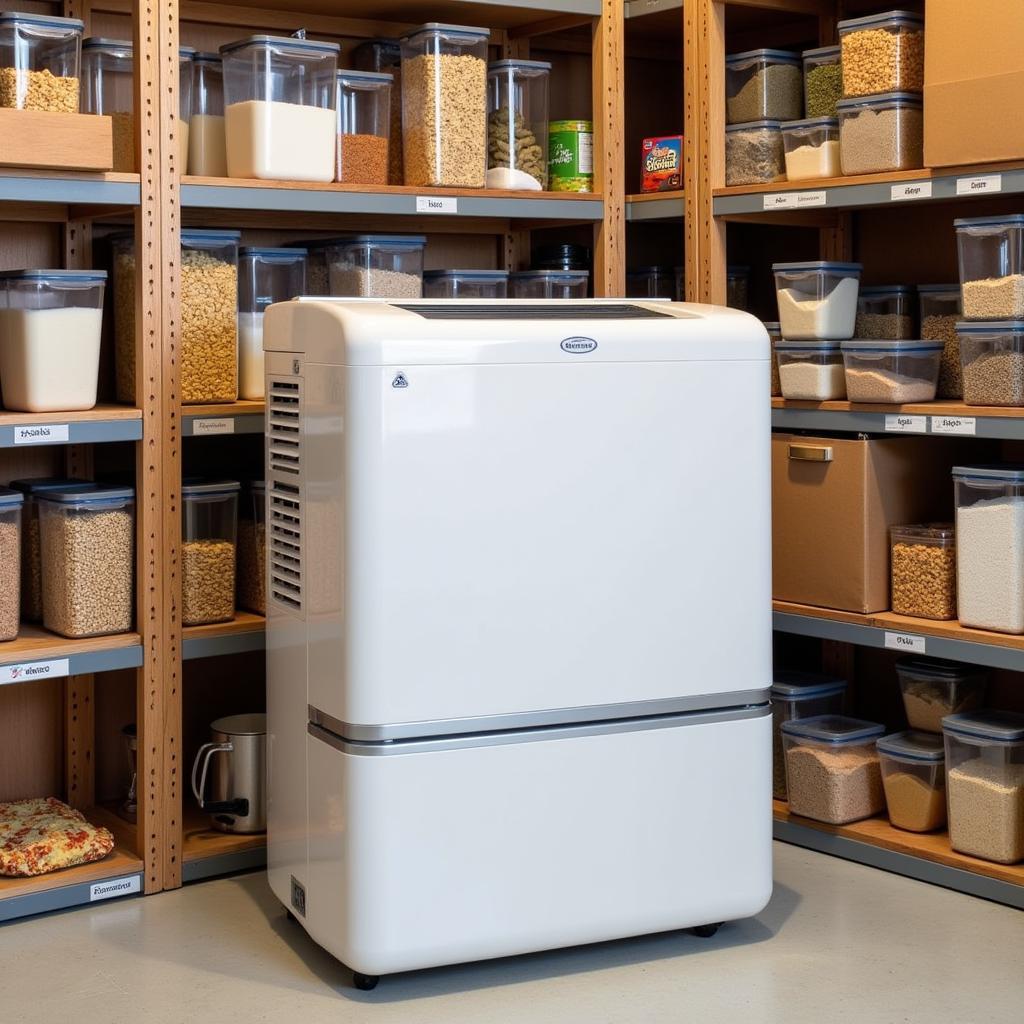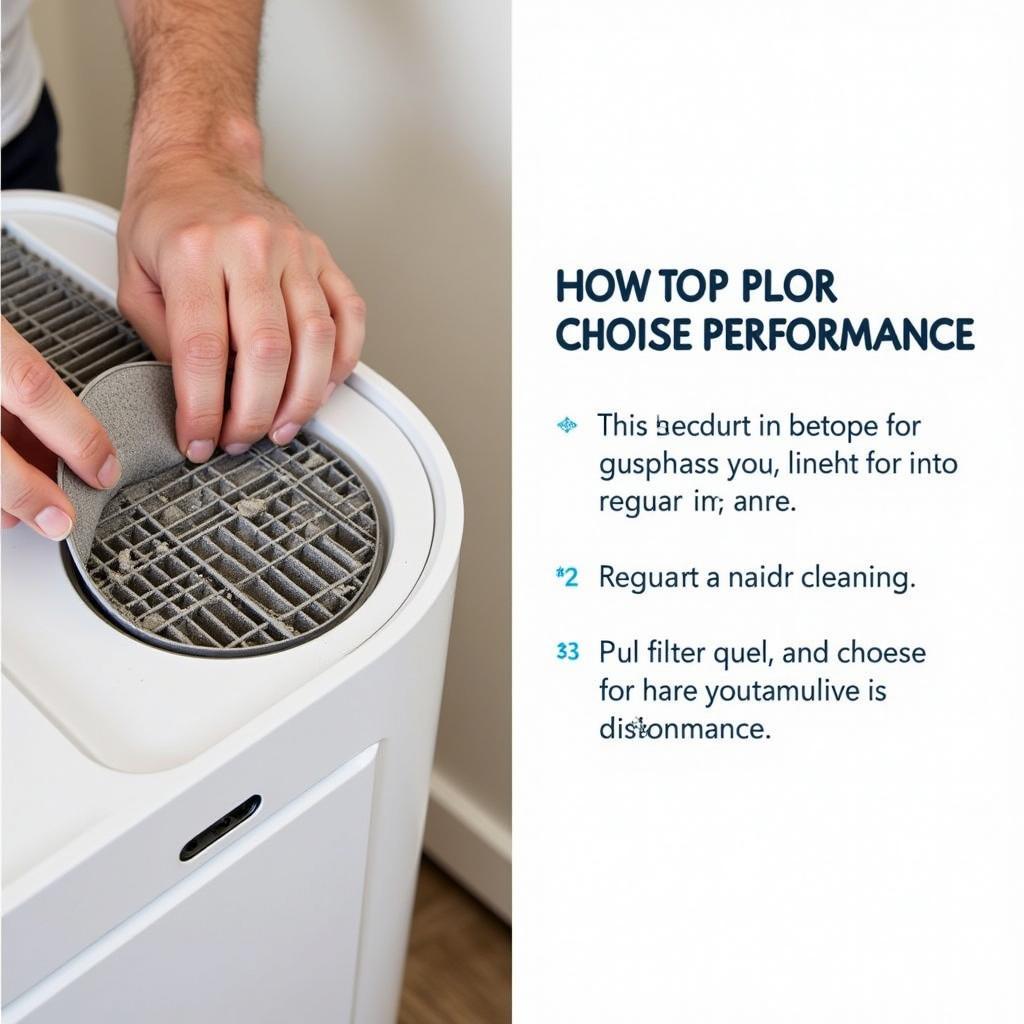A Dehumidifier For Food isn’t just a gadget; it’s your secret weapon in the fight against spoilage, ensuring your ingredients stay fresh, vibrant, and full of flavor. From pantry staples to delicate herbs, controlling humidity is key to maintaining quality and preventing mold growth. This comprehensive guide explores the benefits, applications, and essential factors to consider when choosing a dehumidifier for your food storage needs.
Why Use a Dehumidifier for Food?
Humidity is the silent enemy of food preservation. Excess moisture creates a breeding ground for mold and bacteria, leading to spoilage, unpleasant odors, and potential health risks. A dehumidifier combats this by regulating the moisture levels in your storage environment, creating optimal conditions for long-lasting freshness. This is especially crucial for food industry dehumidification where large quantities of food are stored. By investing in a dehumidifier, you’re investing in quality, minimizing waste, and safeguarding your health. Think of it as an insurance policy for your precious ingredients.
Beyond preventing spoilage, dehumidifiers also help maintain the texture and flavor of your food. Crispy snacks stay crisp, dried fruits remain chewy, and spices retain their potent aroma. Imagine biting into a perfectly crisp cracker weeks after opening the package, or savoring the full-bodied flavor of your favorite spice blend months down the line. A dehumidifier makes these small but significant pleasures a reality.
 Dehumidifier in Food Storage Area
Dehumidifier in Food Storage Area
Choosing the Right Dehumidifier for Your Needs
Not all dehumidifiers are created equal. Selecting the right one depends on several factors, including the size of your storage space, the types of food you’re storing, and your budget. For smaller pantries or cupboards, a compact desiccant dehumidifier might be sufficient. For larger areas or commercial settings, a refrigerant dehumidifier offers greater capacity and efficiency.
Key Considerations When Purchasing a Dehumidifier:
- Capacity: How much moisture can the dehumidifier remove per day?
- Coverage Area: What size space can the dehumidifier effectively dehumidify?
- Energy Efficiency: How much electricity does the unit consume?
- Noise Levels: How loud is the dehumidifier during operation?
- Additional Features: Does it have a humidistat, auto-shutoff, or continuous drainage?
Benefits of Using a Dehumidifier for Food Storage
Using a dehumidifier offers a multitude of benefits, extending the shelf life of your food and enhancing its quality:
- Mold Prevention: By controlling humidity, you significantly reduce the risk of mold growth, protecting your food from spoilage and potential health hazards.
- Preservation of Texture and Flavor: Dehumidifiers help maintain the desired texture of dry goods, preventing them from becoming soggy or stale. They also preserve the potency and aroma of spices and herbs.
- Reduced Food Waste: By extending the shelf life of your ingredients, you minimize food waste and save money.
- Improved Food Safety: Controlling humidity helps prevent the growth of bacteria and other microorganisms that can cause foodborne illnesses.
- Enhanced Storage Conditions: A dehumidifier creates a dry and stable environment, ideal for storing a wide range of food products, from grains and nuts to dried fruits and spices.
“Maintaining the correct humidity is paramount for preserving food quality. A dehumidifier is a non-negotiable investment for any serious food enthusiast or professional,” says renowned food scientist, Dr. Amelia Carter.
Maintaining Your Dehumidifier
Regular maintenance is key to ensuring your dehumidifier operates efficiently and effectively. This includes cleaning the filter, emptying the water tank (or checking the drainage system), and inspecting the unit for any signs of damage.
Can roaches live without food? Interestingly, while a dehumidifier creates a hostile environment for mold, it won’t directly impact insects like roaches. For information on roach survival, you can check out this resource on can roaches live without food.
 Cleaning a Dehumidifier Filter
Cleaning a Dehumidifier Filter
Conclusion
Investing in a dehumidifier for food is an investment in quality, longevity, and peace of mind. By regulating humidity, you protect your food from spoilage, preserve its flavor and texture, and create a safer and more efficient storage environment. Whether you’re a home cook or a food industry professional, a dehumidifier is an indispensable tool for maintaining the freshness and quality of your precious ingredients.
FAQ
- How often should I run my dehumidifier?
- What is the ideal humidity level for food storage?
- What type of dehumidifier is best for my pantry?
- How do I maintain my dehumidifier?
- Can a dehumidifier prevent all types of food spoilage?
- Are there any safety precautions I should take when using a dehumidifier?
- Where can I purchase a high-quality dehumidifier for food storage?
Need to know how long can a roach survive without food? We have that covered too!
For assistance, contact us at Phone Number: 02437655121, Email: minacones@gmail.com Or visit us at: 3PGH+8R9, ĐT70A, thôn Trung, Bắc Từ Liêm, Hà Nội, Việt Nam. We have a 24/7 customer service team.